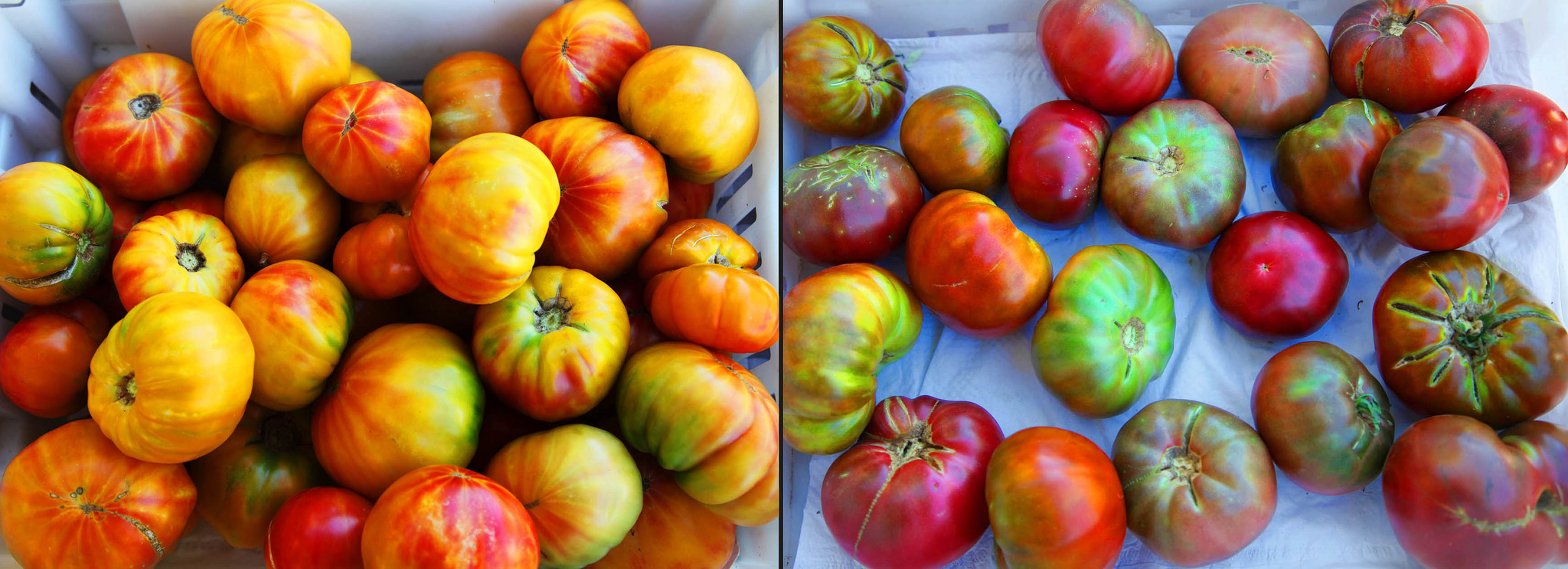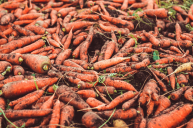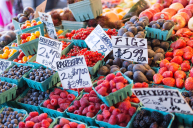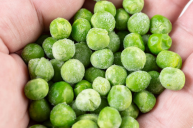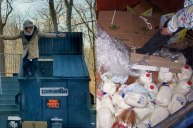All too often, people equate ugly produce with bad produce. It's a real shame because - more times than not - that food is perfectly good to eat. Sometimes you need to trim off a spot here or there, and oftentimes the misshapen food is harder to peel or chop. But, visual appearance aside, that funny-looking food tastes just as great and has the same nutritional value as its perfect counterparts.
In America, organic produce and non-organic produce are held to cosmetic standards that most fruits and vegetables simply can't meet. The food industry, especially small family farms, have trouble conquering the battle with 'ugly produce'. So why should we take a closer look at ugly produce? What could possibly be appealing about this less-than-perfect product, and is it safe to eat?
For farmers, the struggle with ugly produce is real. A good friend of mine owns a farm outside Bend, Oregon. Every year, she has trouble selling her delicious, organically grown produce to the grocery stores. The stores know that consumers only want to buy the best-of-the-best, and they'll only opt for the most flawless piece of fruit (probably after squeezing every tomato in the bunch). The store is not willing to buy gnarled tomatoes or misshapen peppers because they just won't sell.
Funny enough, her "ugly produce" sells just fine at the farmers market and in her CSA boxes. In these markets, she has the opportunity to talk to her customers and explain why the carrot grew with multiple legs, or what happened in the fields that caused her greens to become sunburnt. She connects her customers to the farm in which they grew and, because of that, they feel safe. They're willing to overlook a few bumps and blemishes.
Redefining Food Waste
My friend is not the only farmer struggling with this. Over 40 percent of food grown in the United States goes to waste due to imperfections. And I'm not talking about food that is rotten or diseased. This is food that is too small, misshapen, or bruised - in short, consumers simply don't think it looks aesthetically pleasing.
If you're lucky, the ugly food is fed to livestock or repurposed in the compost pile. Sadly, though, in many cases, the scarred or blemished produce isn't even harvested from the fields. It's too costly to spend the labor on a product that can't be sold, so it's left to rot. How sad is that image when you think of the 50 million Americans that deal with hunger each year!
So, is there a solution to this problem? Absolutely: by tapping into that food waste and redefining it as edible food to consumers. There are companies popping up that aim to do just this. Imperfect Produce is a subscription that delivers boxes of healthy, delicious food that looks slightly imperfect.
Ben Simon, the CEO of Imperfect Produce started his company while studying at the University of Maryland. Noticing the food waste problem at college campuses, Simon created the Food Recovery Network, a nonprofit to prevent the waste of fresh produce. Down the line, the company formed to source ugly fruits and veggies straight from the farm, providing cheaper produce as a home delivery.
The delivery service currently delivers misshapen produce from west coast farms to San Francisco, Oakland, Los Angeles, Portland, Seattle, and Chicago with a small delivery fee.
Over in Europe, they're dealing with the problem via education. Countries like Denmark have become a leader in the food waste revolution by cutting waste by 25 percent since 2010 through incentive programs and education.
The Difference Between Ugly Produce and Unsafe Produce
So if education can make such a huge difference, let's start right here and now! Connect with your local farmer and ask him or her questions about growing produce. What might cause food to become imperfect, is it related to the soil, pests, or the weather? What can you do as a consumer to become more educated about the safety of ugly produce?
Let's take a quick start by looking at qualities of ugly produce and identifying when it's safe to eat. If you arm yourself with this knowledge and ask lots of questions, you might start feeling confident enough to purchase some of those imperfect veggies.
Food is Safe and Nutritious to Eat When:
- It's smaller than average
- It's larger than average
- It has a misshapen, gnarled appearance
- It has some blemishes or scratches on the surface
- It's color or texture is less than consistent with the perfect counterpart
Food is Rotten, Diseased, or Unsafe to Eat When:
- The surface scratches represent a significant amount of broken skin, or there are open cuts or signs of oozing.
- The blemishes are soft spots that break the surface of the produce.
- The discoloration involves spots of different texture, indicating a mold or fungus
- Overall, the produce is very soft, easy to depress, or shows signs of recesses, indicating that the rotting process has begun
A Final Look at Ugly Produce and Food Waste
For a visual view of the ugly produce situation, check out this beautiful infographic from our friends over at Fix.
For inspirational vegetable recipes, check out these 15 beet recipes that will make it your new favorite veggie!

